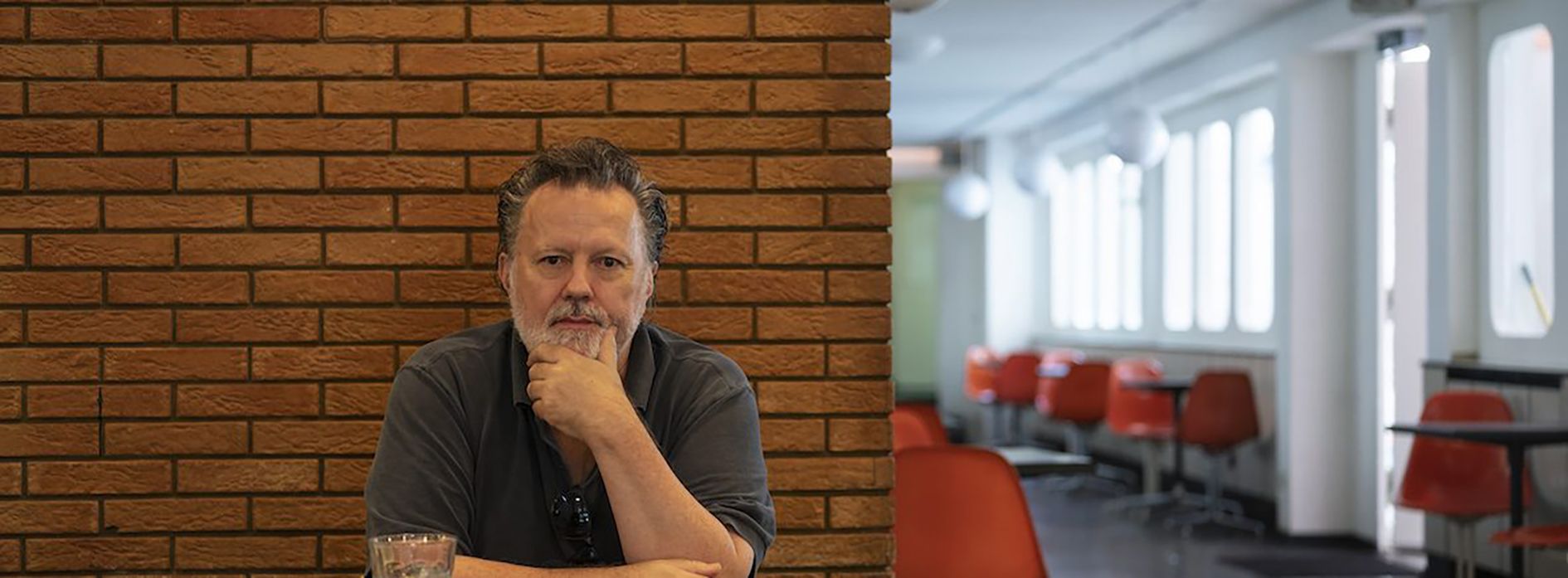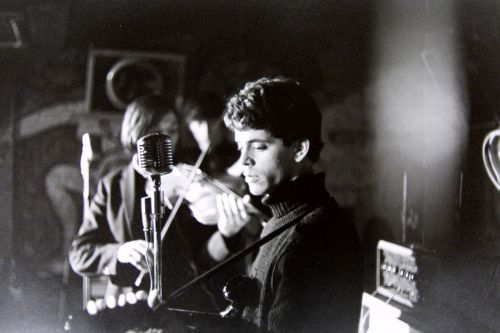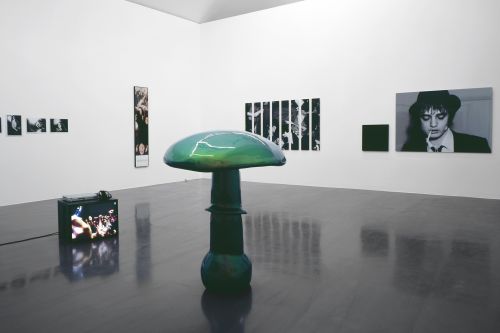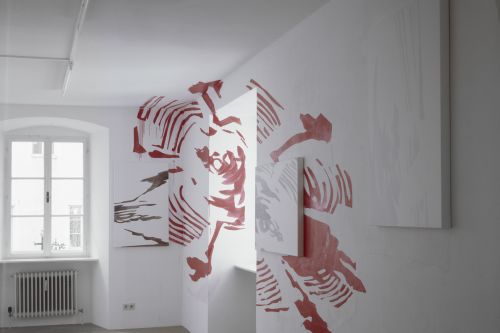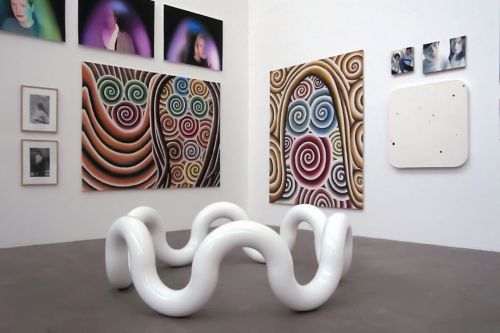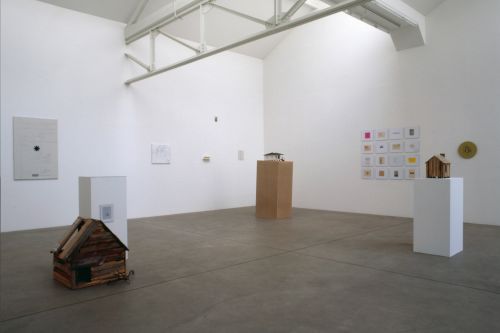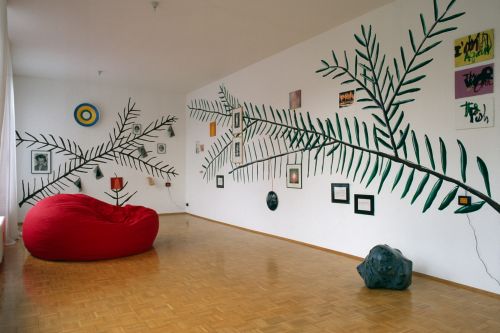What unites Dahn’s large- and small-scale paintings from the early 1980s is their historically singular engagement with the medium of painting. Each of these works looks rapidly painted, even slapdash in their execution. Acrylic and emulsion paints ooze and drip, areas of color appear impulsively composed, and figurative elements are painted carelessly or presented as hastily sketched outlines. The subject matter is equally unkempt: skulls morph into peace signs or stare hungrily at a drink, bizarre body parts hold cigarettes, or a Beuysian hat might perch on a pole arrayed against an abyss. These paintings are also fueled by jokes and erratic slogans. They consider the figurative, but inevitably land in the realm of the grotesque and semi-obscene. They visually invoke emblems and attitudes of the punk movement while simultaneously poking fun at them. Dahn’s paintings seem opposed to everything. Paintings in spite of themselves, they bear witness to an extraordinary artistic instinct that is most effective when turned against itself.
Paradoxically, Dahn’s work has a painterly flair and testifies to an unwavering struggle with the purpose of painting in a late-capitalist art system inclined to treat artworks as objects of speculation and decoration. His works constantly demand to know what one should paint and why anyone should bother painting at all. Dahn’s early works succeeded in laying a cornerstone of the “Bad Painting” movement, exuberantly opening an art-historical door that few thought existed.
Inevitable as it seemed, Dahn’s abandonment of painting came on gradually. His screen prints—which increasingly became his main outlet along with photography, drawing and film—are not editions, the potentially limitless reproduction common to the medium, but are one-off, original pictures. In some respects, they are a logical continuation of his painting, albeit with non-painterly means.
The found images, lettering and slogans on which these works are based often strike the viewer as vaguely familiar. A testament to Dahn’s wide-ranging interests, they also point again and again to the major role that music played in his life. Visual elements, including an early ethnological photograph of aboriginal Australians, or a picture of a nude Naga cult follower riding a horse, mingle with such distinctive slogans as “Punk is the sound of my soul” or Oscar Wilde’s aphorism, “We are all in the gutter, but some of us are looking at the stars.“ Symbols from the artwork of famous albums by The Smiths, the Sex Pistols, or The National round off his visual lexicon. Like Dahn’s paintings, these works unleash a vast array of associative chains, posing existential, historical, personal and intellectual questions, permeating our consciousness. Rather than explore the trappings of artistic ideologies, they investigate the visual ideologies of everyday life.


